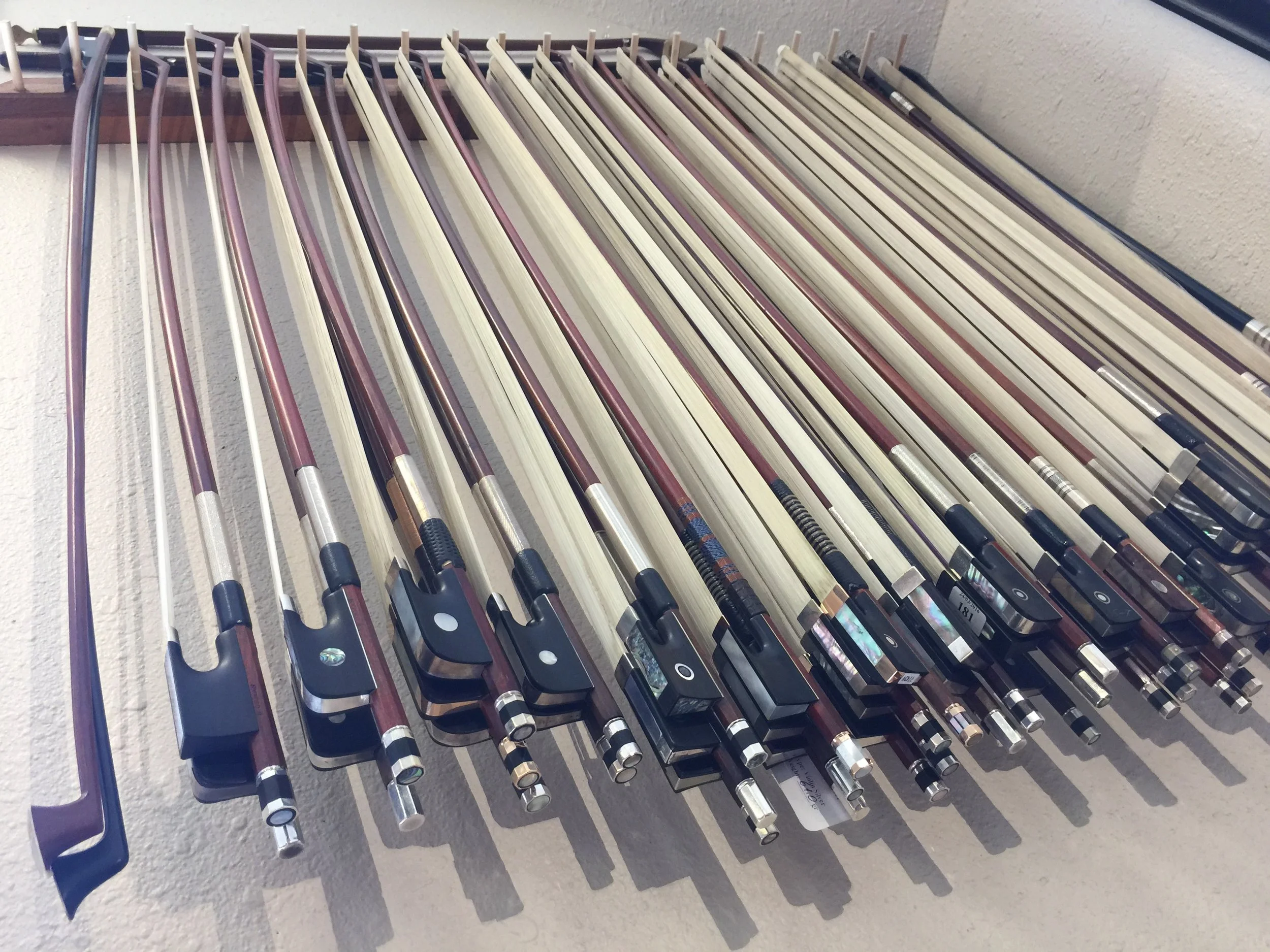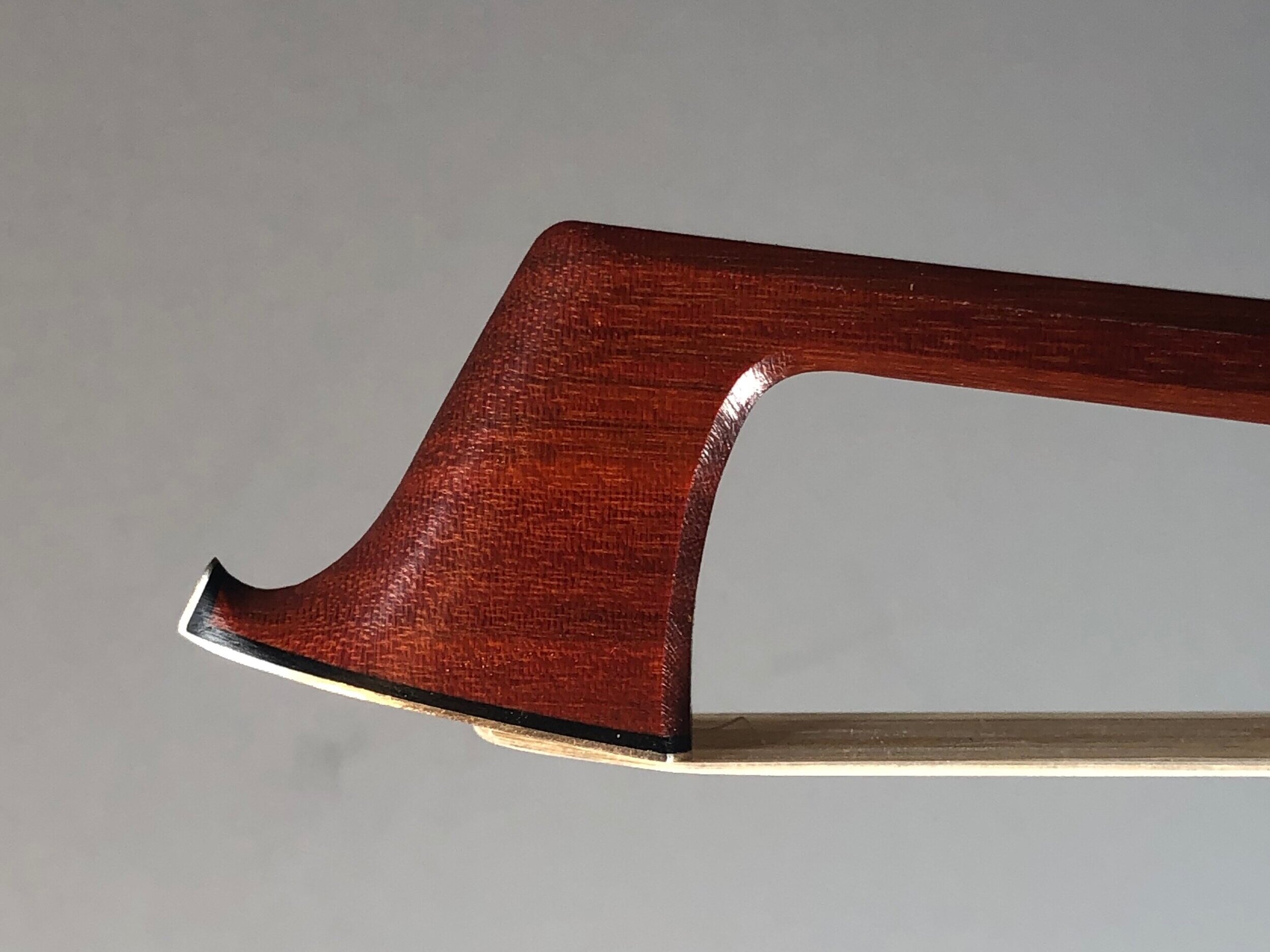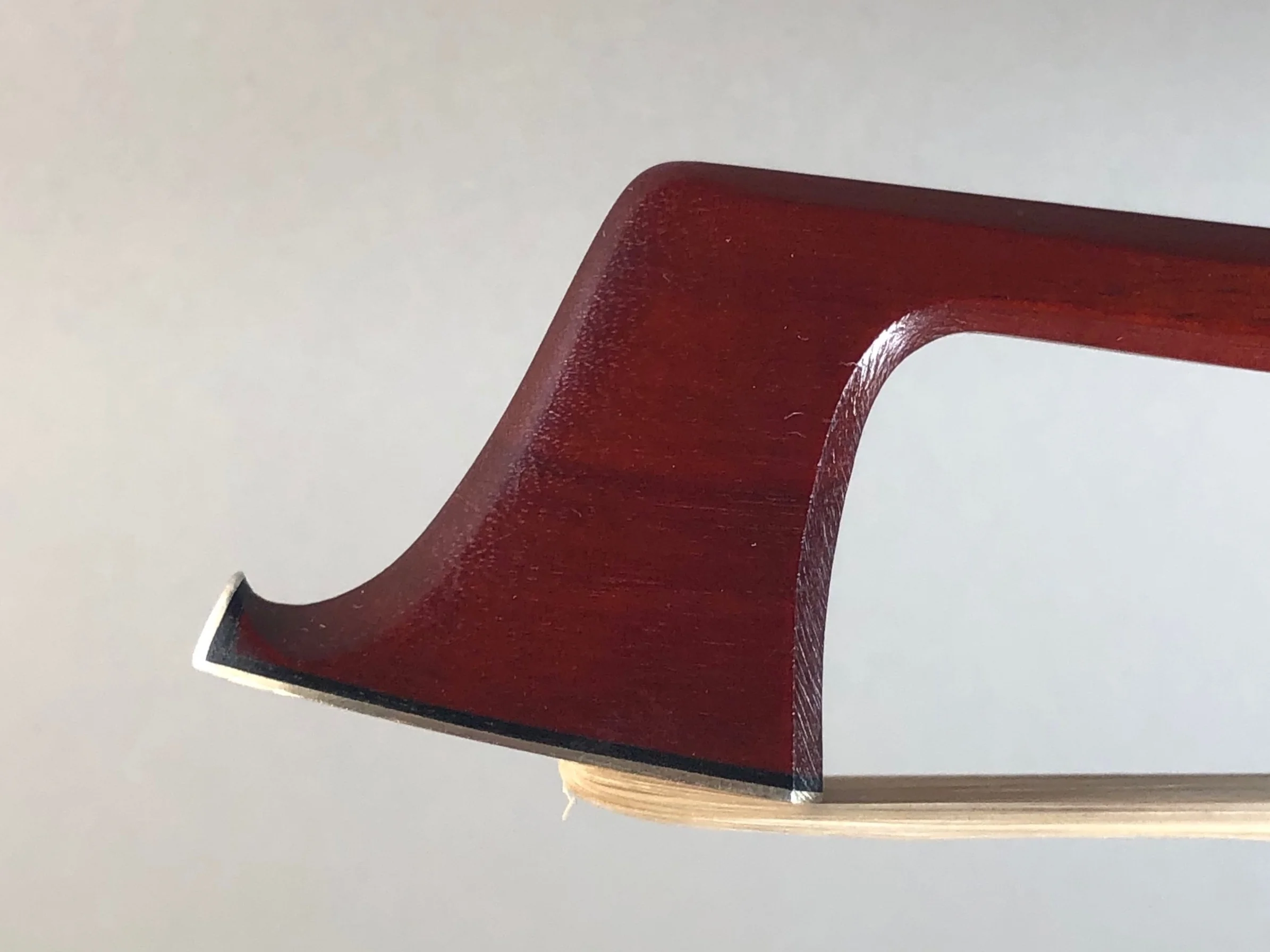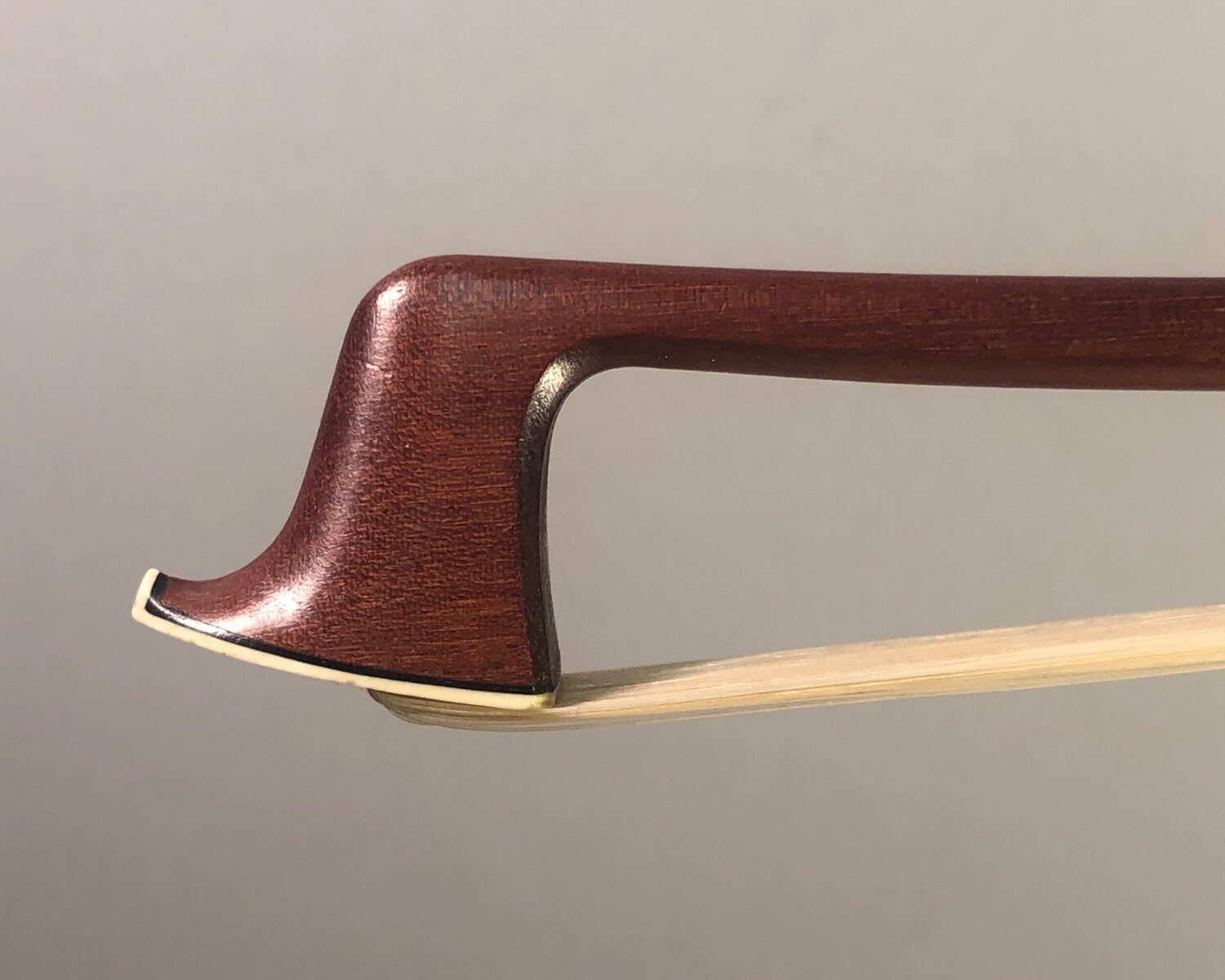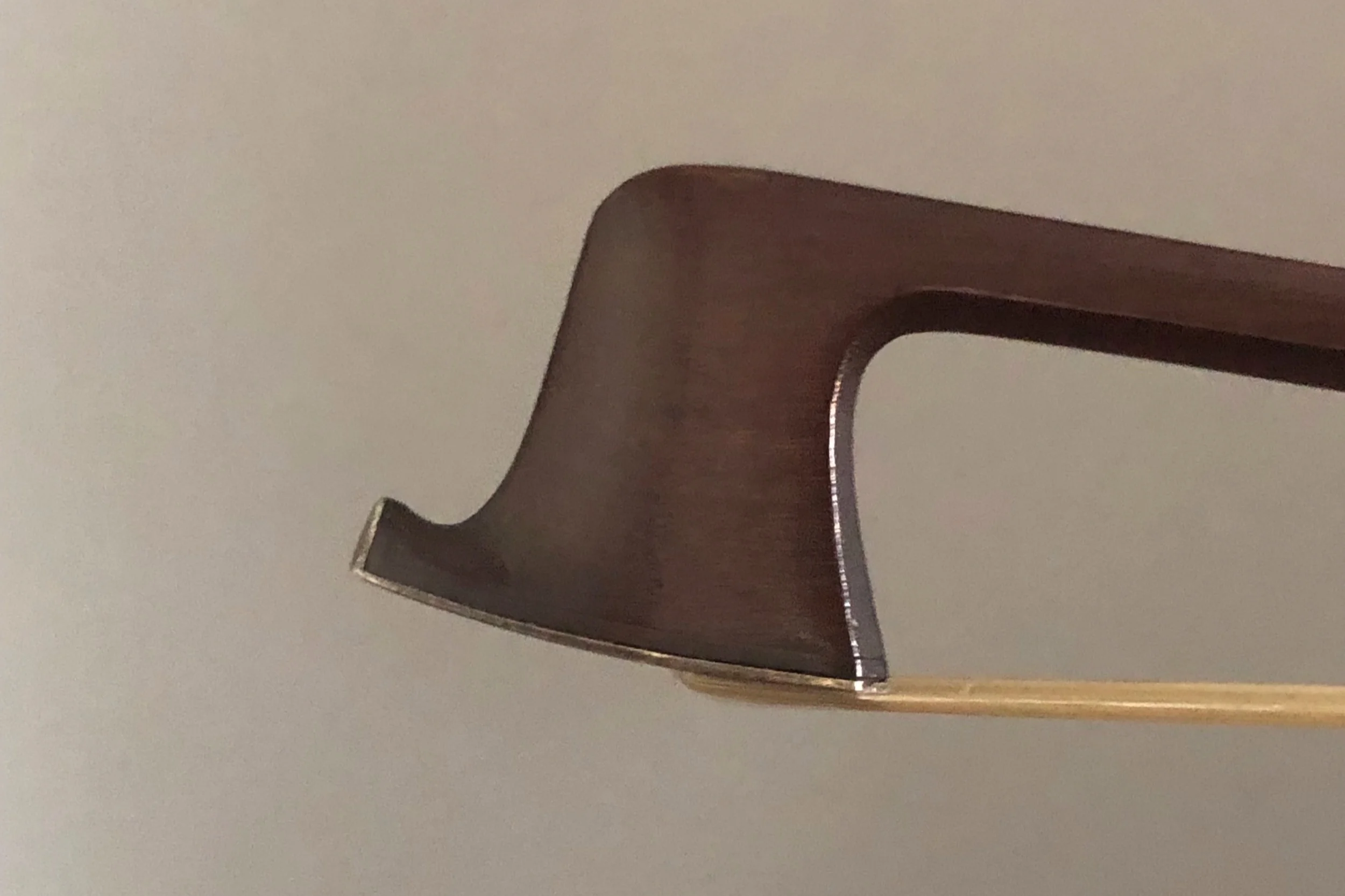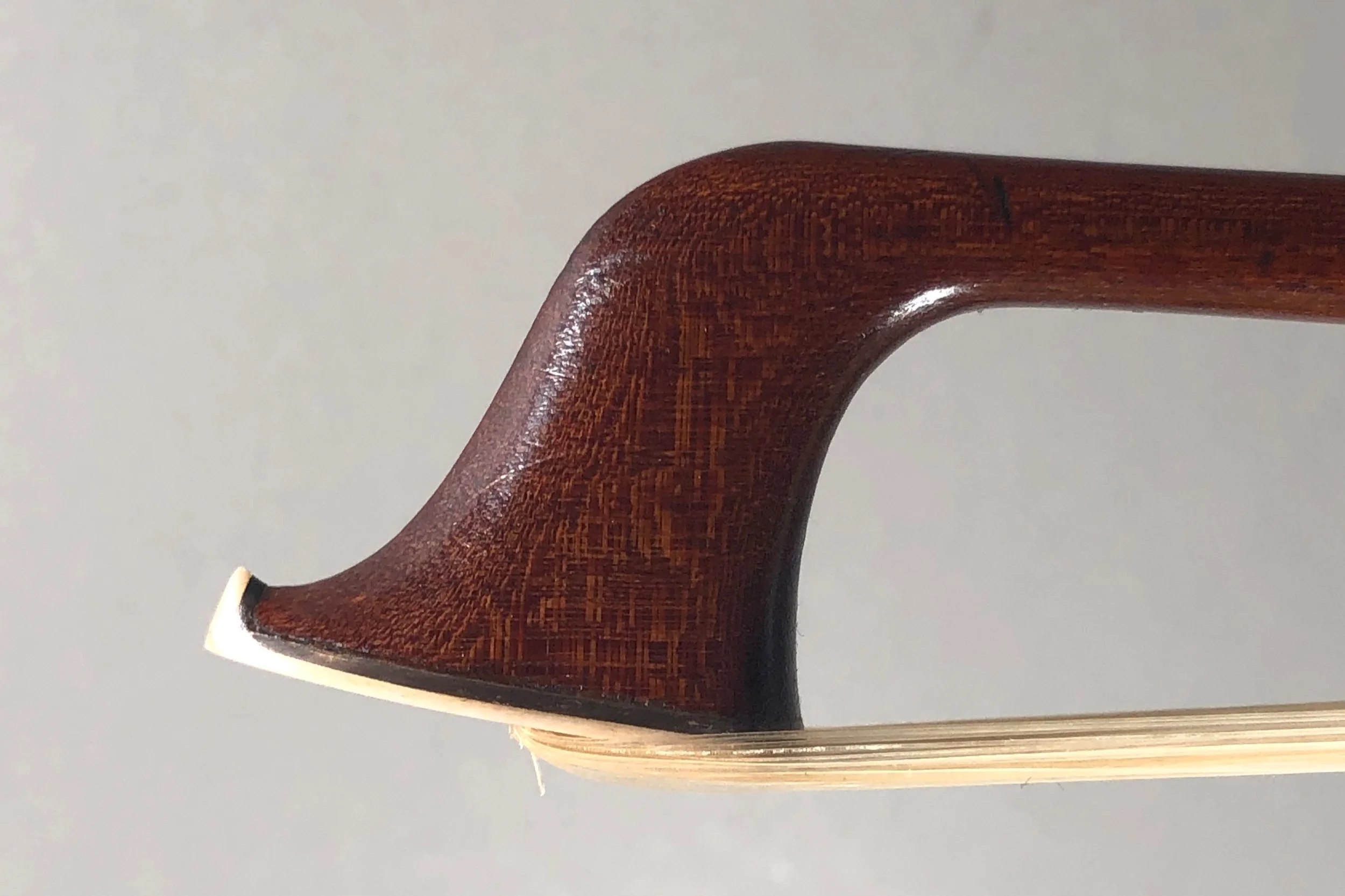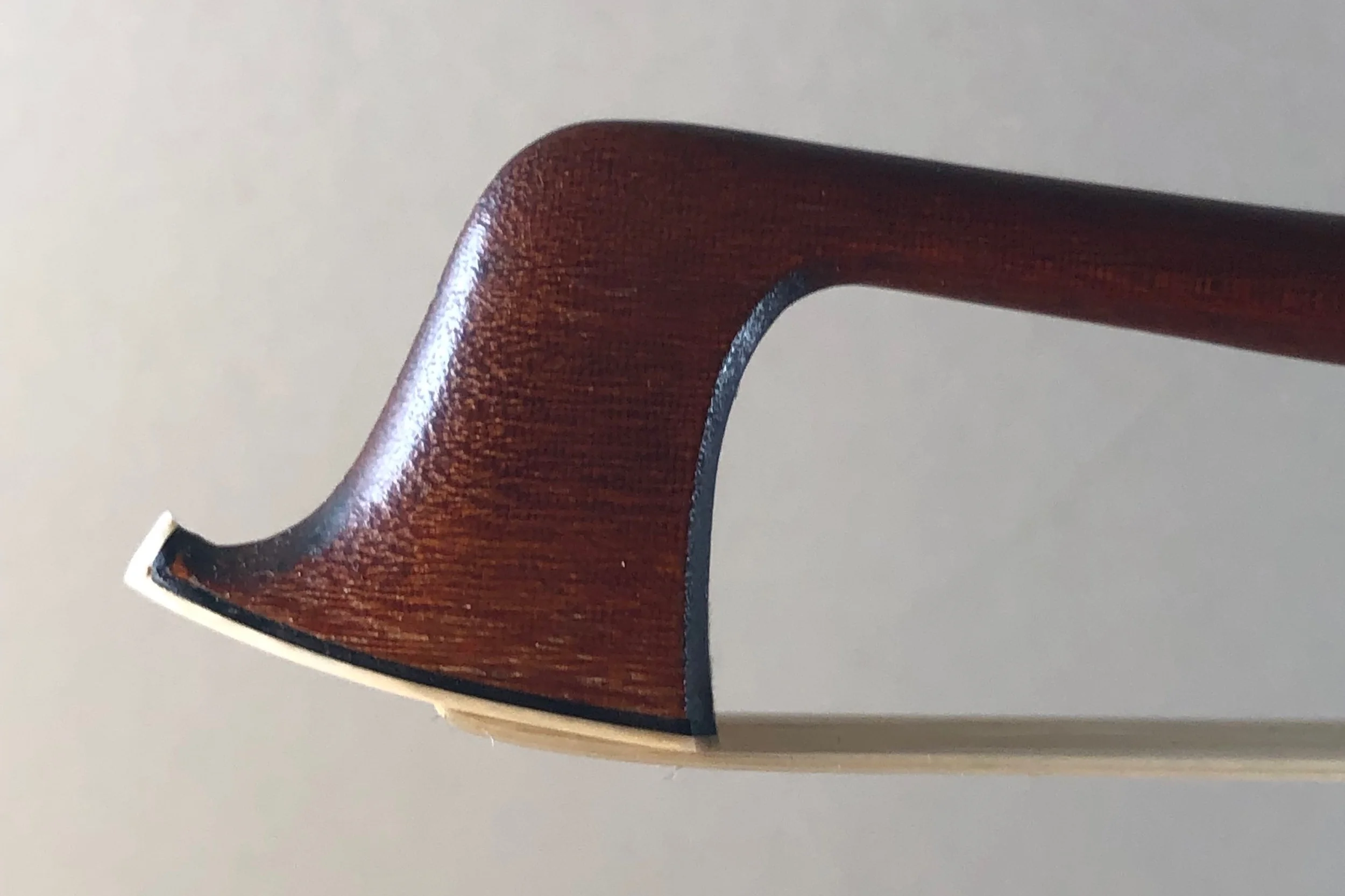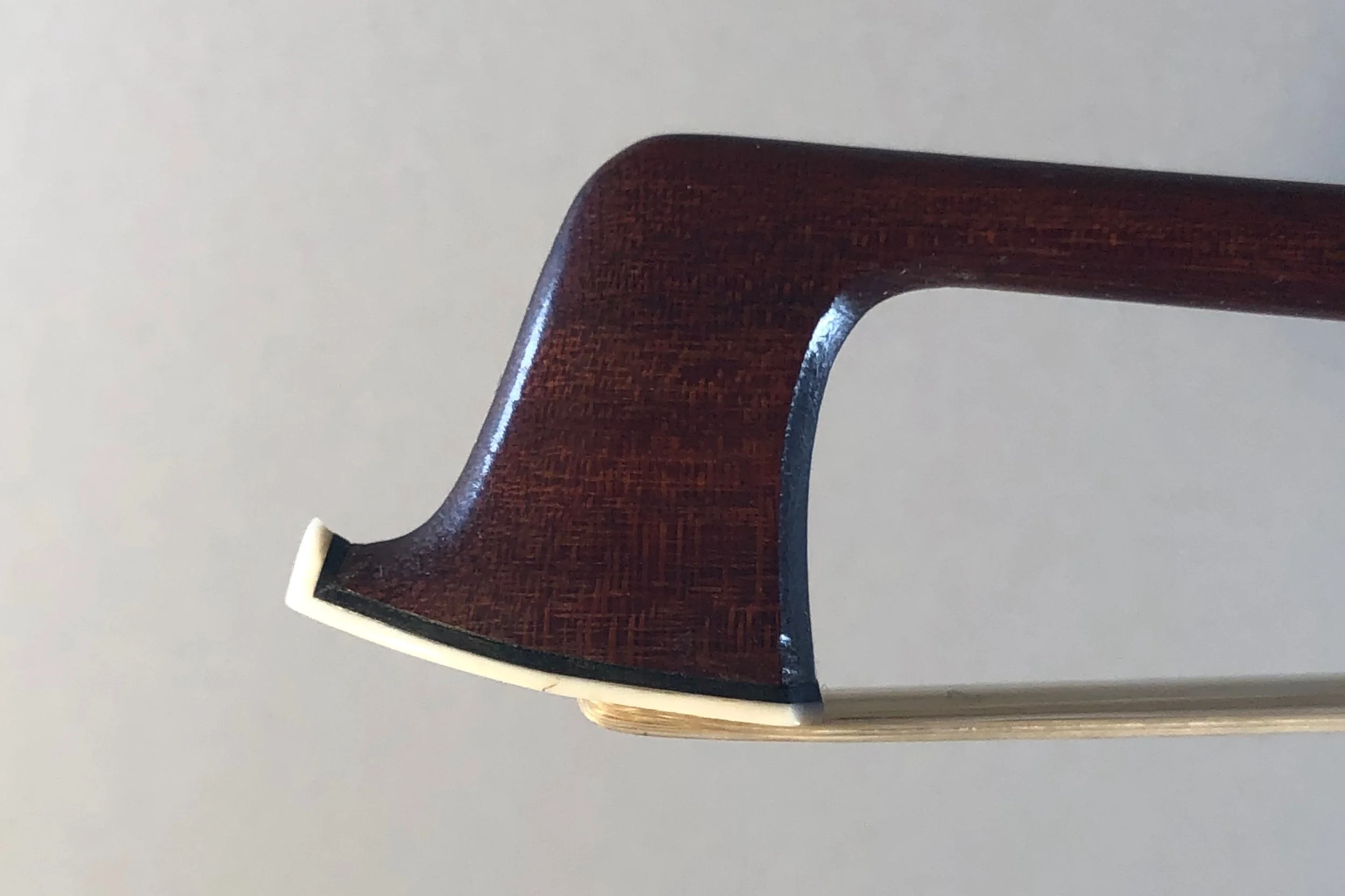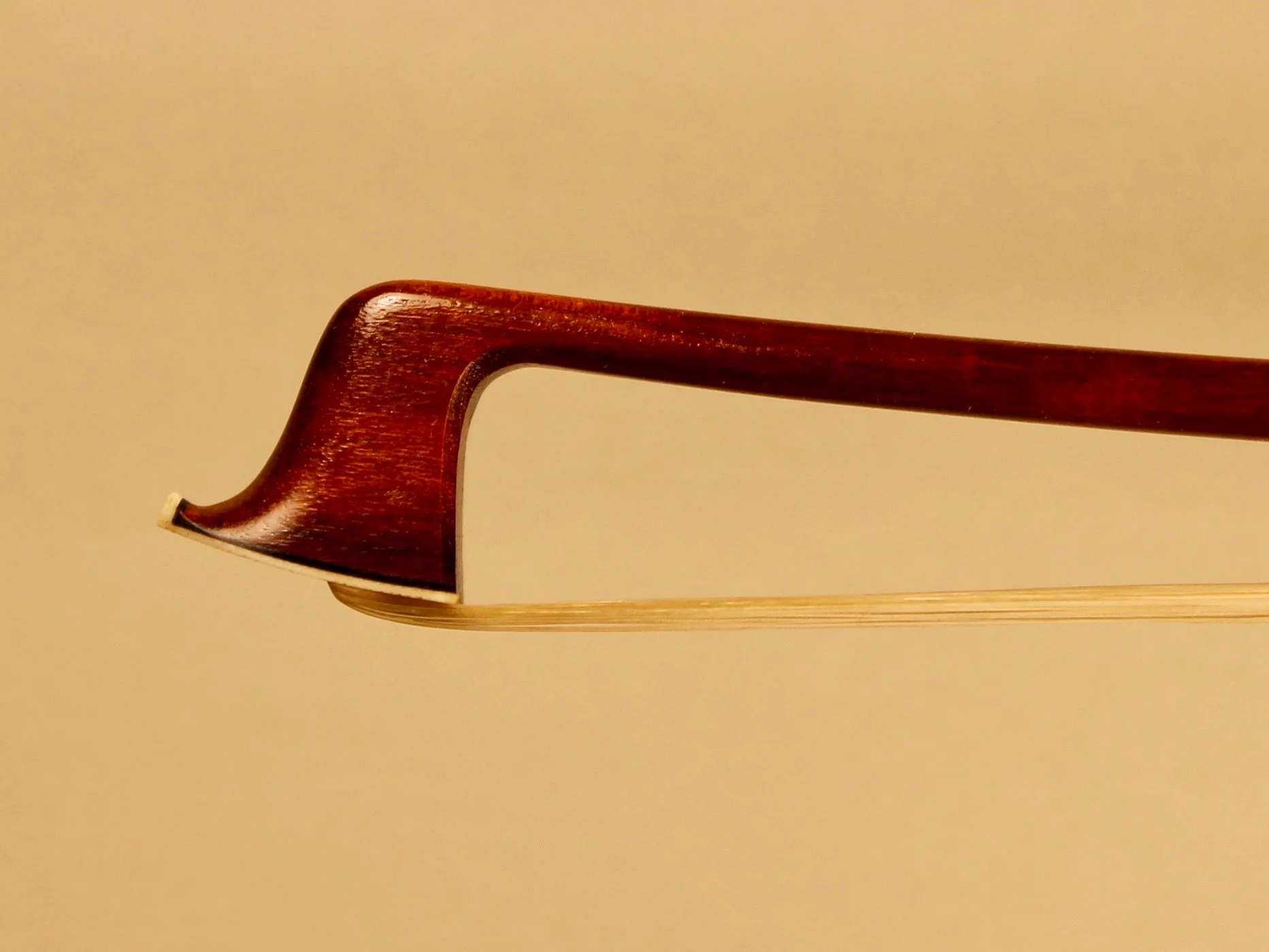Selected Inventory
Click photos for more images.
U.K. bowmaker, Tim Baker and I made this bow at the Oberlin Workshop as a joint effort- We were lucky to select a piece of pernambuco for the stick which possesed a rare combination of qualities: Density, strength and beauty. It is stamped with both of our names, as well as the Oberlin 2017 workshop stamp.
A cello bow by a member of the Dodd family (likely James I and Edward II) ca. 1810. A bold, massive model with surprising light handling and balance. The frog and adjuster were probably made later, and made for this bow by a member of the Dodd family. There is fascinating evidence of overstamping and previous removal of brand stamps on this bow- a common practice during the first half of the 19th century in England. The brand stamp was often meant to indicate the seller of the bow, rather than the maker, and it was common for stamps to be scraped off or simply stamped over the previous one... The winner in this case is “DODD”.
A pristine violin bow by James Dodd II, London, ca. 1850. An eccentric, but undeniably talented and inventive bowmaker, James Dodd consistently used pernambuco of exquisite quality and often planed his sticks to elegantly delicate dimensions. The very short frog allows a long hair length while allowing the stick to be short. This example also has the original hair channel which has a precise gap for the hair, eliminating the need for a spreader wedge. I made a thumb leather which allows the bow to be held in two different ways.
A lovely violin bow by Eugene Sartory, ca. 1930. A classic example in silver and ebony which illustrates why these bows are so sought after- power, finesse and predictability. This bow was lovingly cared for by its previous owners.
Thomas Tubbs, grandfather of James Tubbs, was the first member of the famous Tubbs family of British bowmakers, and was associated closely with the Dodd workshop. This unique viola bow is stamped “BETTS” and probably dates from around 1850. The frog and adjuster are of amourette (unfigured snakewood) mounted with silver.
This cello bow makes a strong statement: The head is almost a caricature of Thomas Tubbs’ unique style, the ironwood stick is powerful and strongly cambered, and the design of the frog is stark and almost modern. Both the handle of the stick and the frog are stamped “FORSTER” in small letters, indicating that the bow was made for the shop of Simon Andrew Forster in London. This bow has strength, a reserve of power and a dense, dark tone.
This is an elegant swan-headed cello bow with Vuillaume-style mounts that is reminiscent of the style of Nicholas Maline. A photo certificate from Paul Childs is included attributing this bow to Jean-Joseph Martin. The frog and adjuster are replacements which I made for this bow.
An example in pristine condition, ca. 1910. This example is stamped '“GUSTAVE BERNARDEL á PARIS” and is mounted in Maillechort (Includes photo certificate.)
An early (ca. 1855) Vuillaume-style bow with a much more bold style than his later work. Includes photo certificate from William Salchow.
This bow is an elegant copy of an early period Sartory featuring exquisite materials and craftsmanship.
